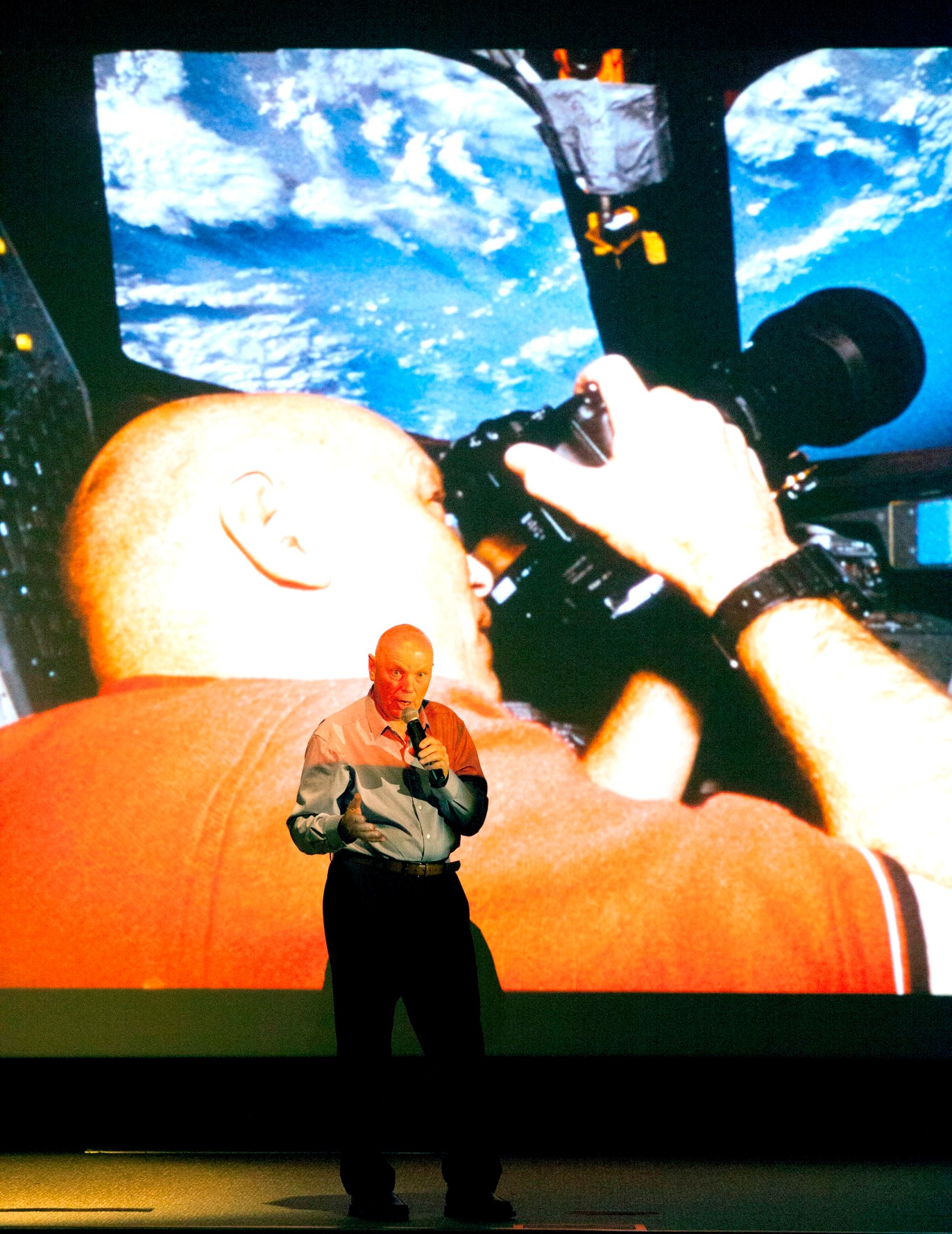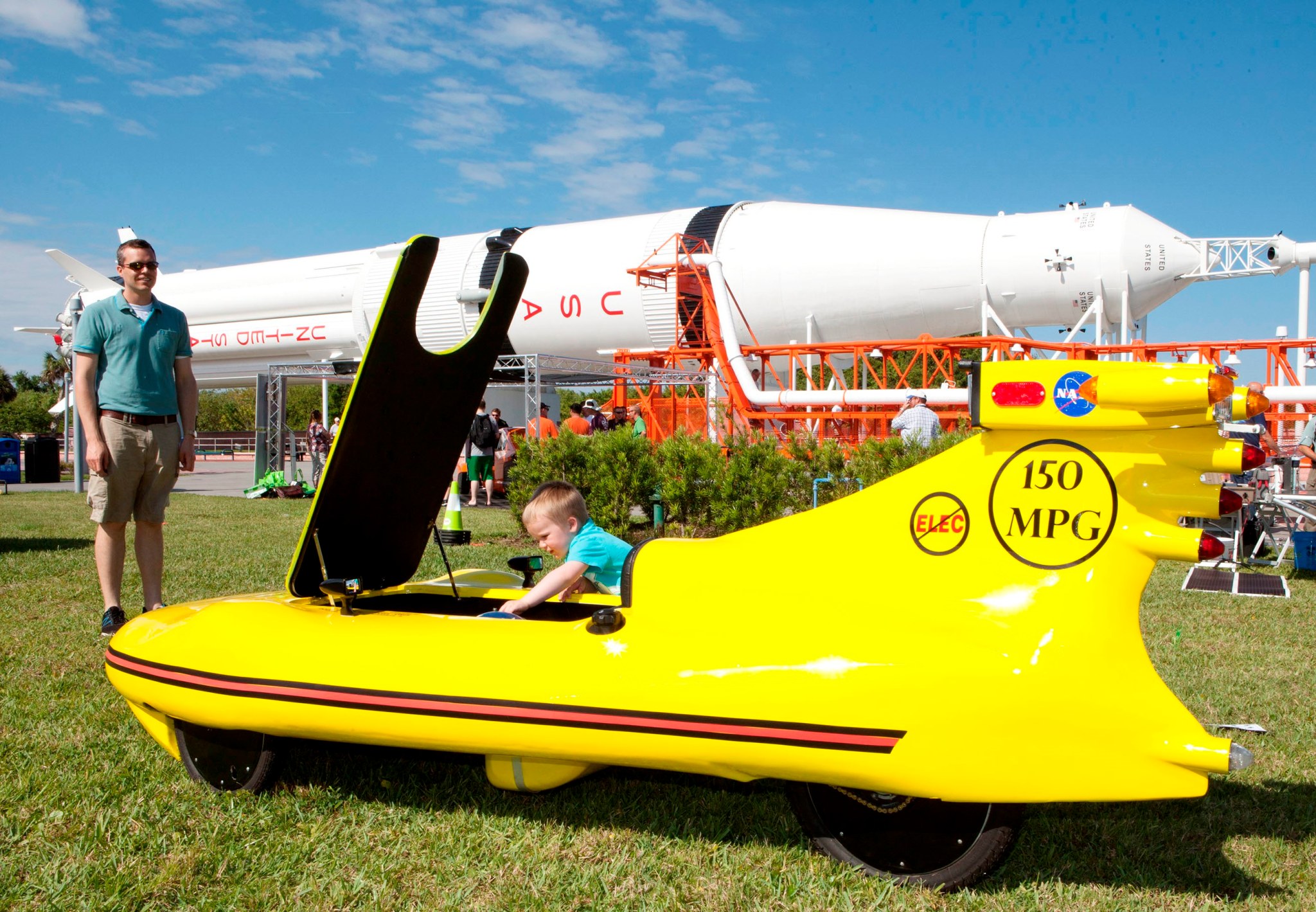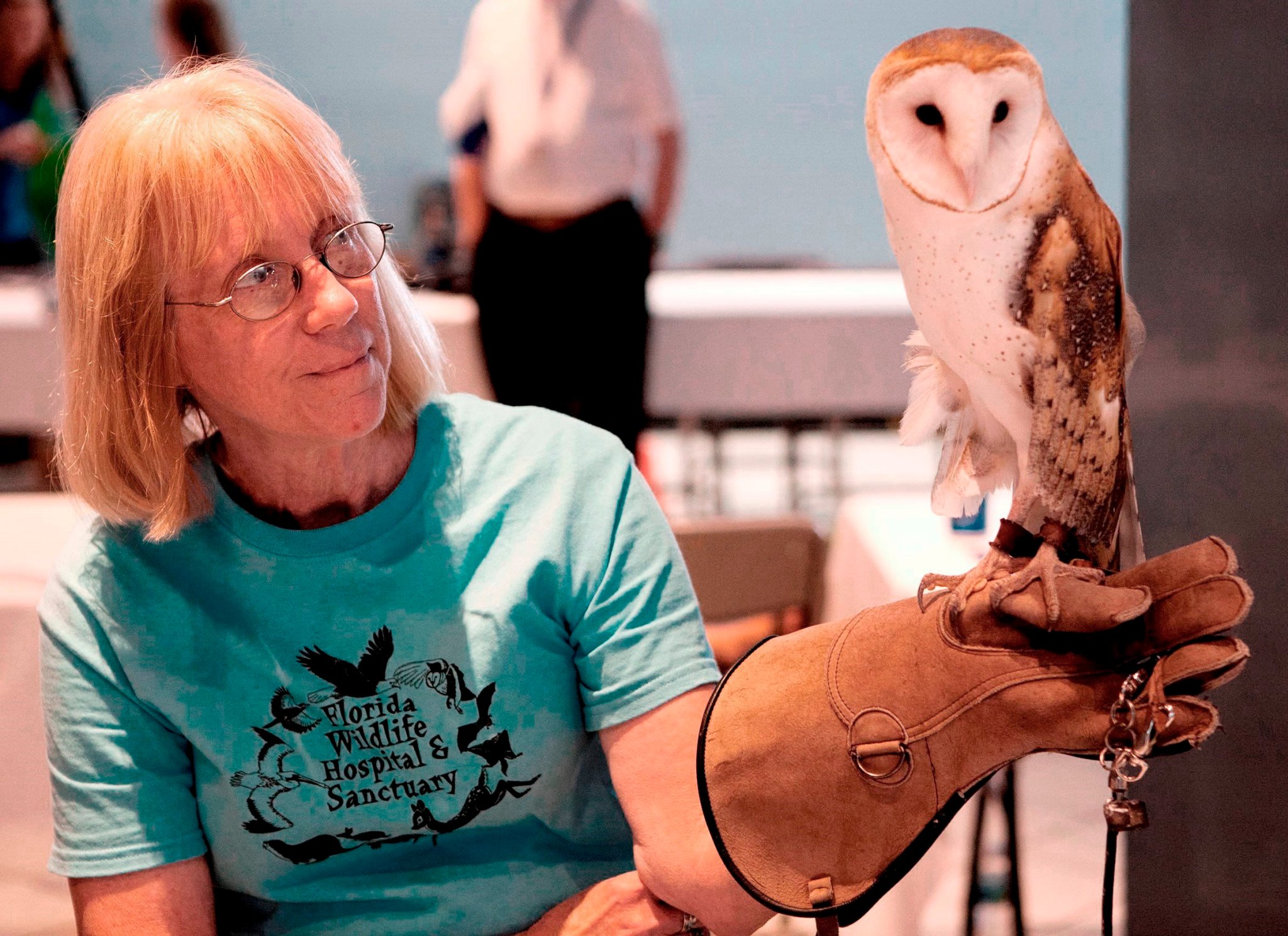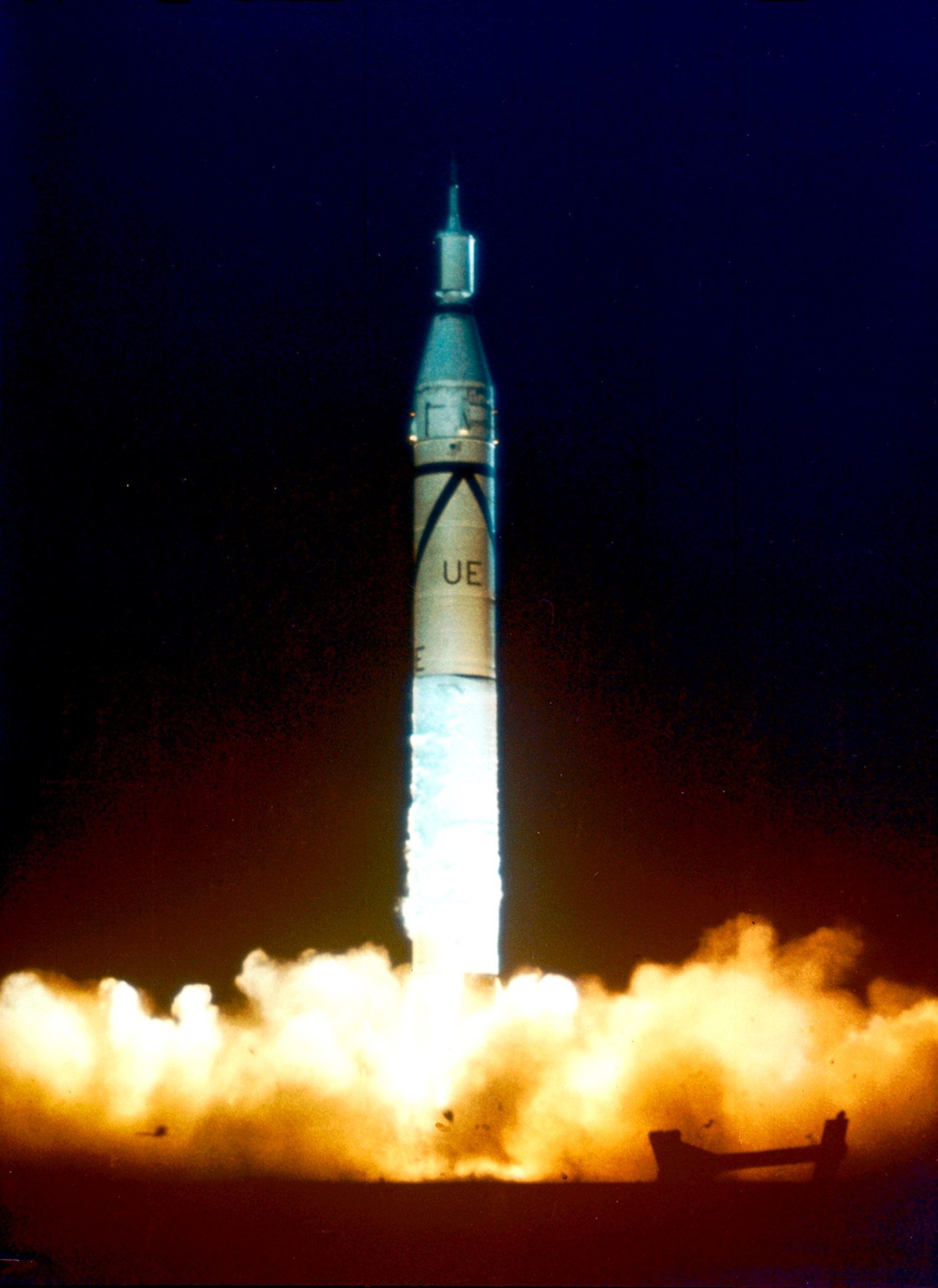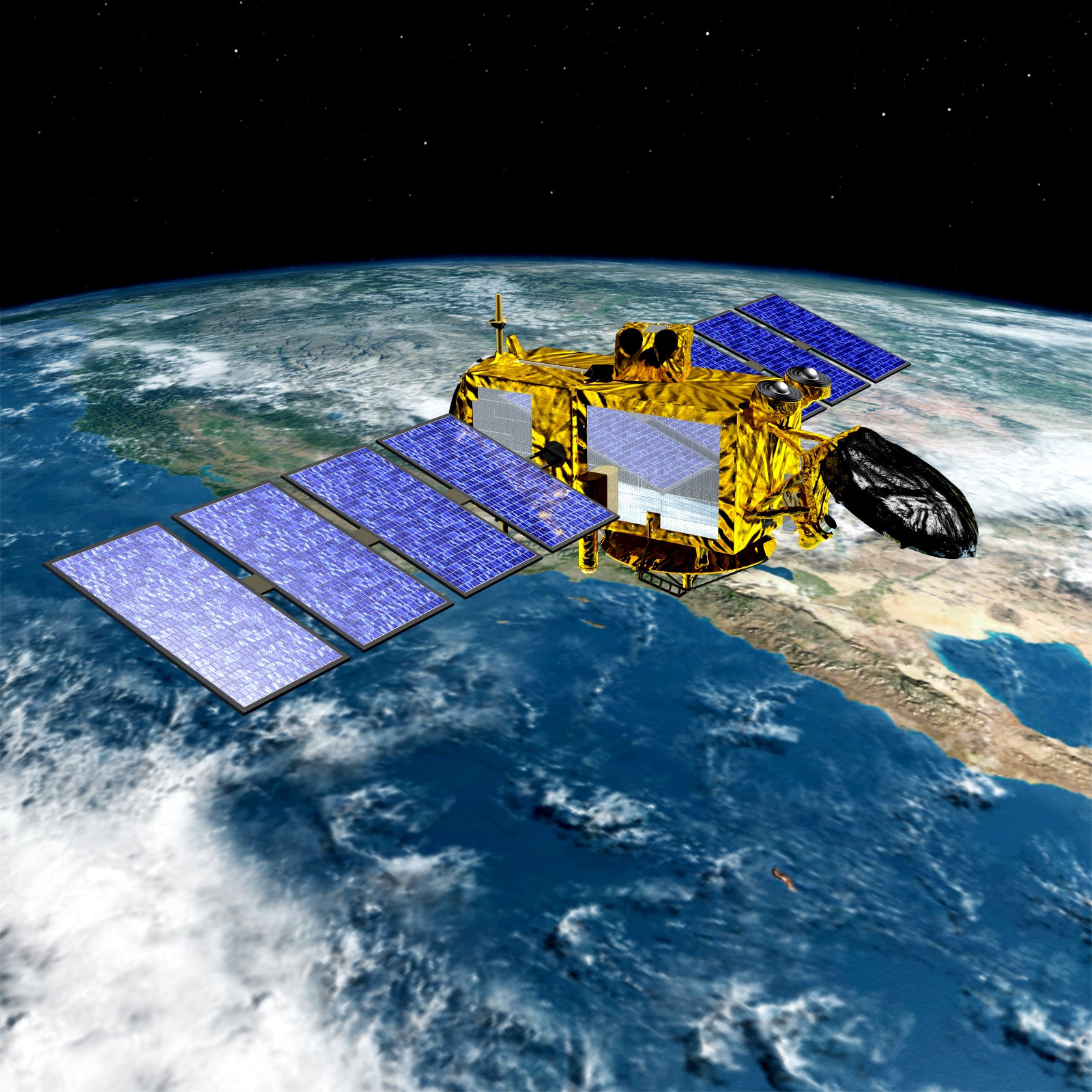Since the earliest days of America’s efforts to explore space, NASA has used the vantage point of Earth orbit and beyond to increase its understanding of the world, improve lives and safeguard the future. This effort was highlighted in the late 1960s as Apollo astronauts returned spectacular images of Earth taken during their historic trips to the moon. At about the same time, the growing environmental movement led to the first Earth Day in the United States, taking place April 22, 1970.
“Observing our home is at the core of NASA’s mission, and it continues be a dynamic and growing area of our activity,” said NASA Administrator Charlie Bolden in an Earth Day message to agency employees and contractors. “We want to know how our planet works, how we affect it, and how it might change in the future.”
In celebration of the 45th Earth Day and in keeping with this year’s national theme, “It’s Our Turn to Lead,” NASA and Delaware North hosted an educational event at the Kennedy Space Center Visitor Complex on April 22 with activities throughout the day for employees and park guests.
Kelvin Manning, Kennedy’s associate director, pointed out that over the past 45 years, Earth Day has become a global event designed to demonstrate support for environmental protection.
“Today, we join over one billion people in 192 countries participating in Earth Day activities,” he said.
Manning also noted that NASA continues to be a world leader in Earth and climate science, providing unique perspectives of Earth from space.
“From space, we can see some of the changes taking place on the Earth,” he said.
One example Manning referenced is an upcoming international mission to measure the levels of the world’s oceans.
“In July, NASA will launch the Jason-3 satellite in a cooperative effort with our partners in Europe,” he said.
Jason-3 is the fourth in a series of spacecraft designed to measure the height of the ocean surface. These measurements provide scientists with crucial information about circulation patterns in the ocean and about both global and regional changes in sea level. It is a joint endeavor between NASA, the National Oceanic and Atmospheric Administration, the National Centre for Space Studies (the French space agency), and EUMETSAT, the European Organization for the Exploitation of Meteorological Satellites.
In addition to remarks by Manning, the day’s events included demonstrations by more than 50 exhibitors, including representatives of the Merritt Island National Wildlife Refuge, Canaveral National Seashore, Brevard Zoo and General Motors.
Visitors watched a demonstration by the FIRST robotics team and their recycling robot. The FIRST competition is a nationwide program that matches professionals with young people to solve an engineering design problem in a contest involving robots. Another educational exhibit included entries in the Earth Day poster contest, submitted by local elementary school children.
The keynote speaker for Kennedy’s Earth Day event was former space shuttle astronaut Story Musgrave who presented a program called, “In Touch, and in Love with the Cosmos — the Heavens, the Earth, and All the Other Creatures on the Journey.”
In his presentation, Musgrave shared his thoughts on imagery photographed on his six space shuttle missions. In doing so, he explained his belief that people must respect and care for our home planet.
“Nature only draws curves, man draws lines,” Musgrave likes to say.
Musgrave was a mission specialist on STS-6 in 1983; STS-51F in 1985; STS-33 in 1989; STS-44 in 1991; STS-61, the first Hubble Space Telescope servicing mission, in 1993; and STS-80 in 1996.
In addition to operating a palm tree farm near Orlando, Musgrave now has media production companies in Orlando and Sydney, Australia.
Bolden noted that NASA continues to do its part in caring for Earth.
“We don’t have all the answers yet, but we’re making progress,” Bolden said. “We are steadily increasing the known, and decreasing the unknown about how Earth is changing. Knowledge is a powerful tool, and with it we can all be better stewards of our home planet.”
NASA has led in developing new ways to observe and study Earth’s interconnected natural systems with long-term data records. The agency freely shares this unique knowledge and works with institutions around the world to gain new insights into how Earth is changing. This has been a key part of America’s space program since its inception.
On Jan. 31, 1958, Explorer 1 was the first satellite launched by the United States. Orbited as part of the nation’s participation in the International Geophysical Year, it was the spacecraft that discovered the Van Allen radiation belts surrounding Earth.
Starting in 1972, the Landsat program is the longest running effort for acquisition of satellite imagery of Earth. The most recent was Landsat 8, launched in 2013. The instruments on the Landsat satellites have captured millions of photographs. These images, archived in the United States and at Landsat receiving stations around the world, provide a resource for research and applications in agriculture, geology, forestry, regional planning and education.
Another example of this ongoing effort launched in 2014, NASA’s Orbiting Carbon Observatory-2, or OCO-2, now is collecting precise global measurements of carbon dioxide in the Earth’s atmosphere. The data will provide scientists with a better idea of the chemical compound’s impacts on climates around the world. Scientists also are analyzing the data to develop a better understanding of the natural processes and human activities that regulate the abundance and distribution of this important atmospheric gas.
Earlier this year, the Soil Moisture Active Passive, or SMAP, satellite was launched. SMAP is a remote sensing mission designed to measure and map the Earth’s soil moisture distribution and provide freeze/thaw measurements with unprecedented accuracy, resolution and coverage. These measurements will be used to enhance understanding of processes that link the water, energy and carbon cycles, and to extend the capabilities of weather and climate prediction models.
“Right now, including those recent launches, NASA has 20 spacecraft orbiting Earth and gathering amazing science data,” Bolden said. “They can see carbon dioxide in the air, water reserves below ground, the heat our planet is absorbing, and the inside of hurricanes — amazing stuff!”
Through data returned by spacecraft such as these, NASA’s expertise in space and scientific exploration is contributing to essential services provided to the American people by other federal agencies, such as weather forecasting and natural resource management.
“This is the first time in human history that we can really see and hope to understand how a planet lives and breathes,” Bolden said “It’s a tall order, but NASA is on it.”





























